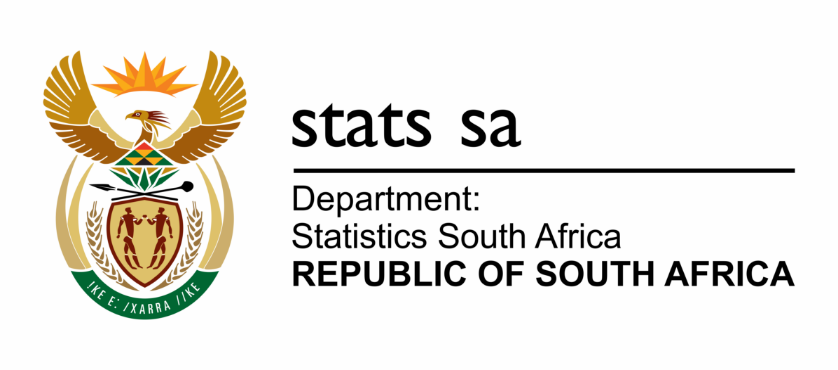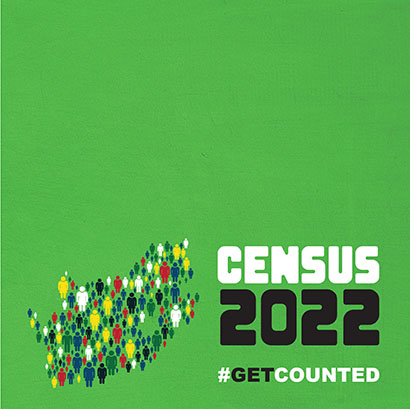Agricultural Statistics
The history of agricultural statistics in South Africa goes back as far back as the beginning of the 20th century. With the exception of the World Wars and great depression years, an agricultural census was conducted on annual basis in the first half of the 20th century. As agriculture�s contribution to the country�s gross domestic product (GDP) decreased over the years, so did the frequency of conducting agricultural censuses. Post 1994, agricultural censuses have been conducted on a five yearly basis, with annual surveys being conducted in between the census years. Until now, agricultural censuses and surveys have largely concentrated on commercial agriculture leaving out small-scale and subsistence agriculture.
In 2009, Statistics South Africa (Stats SA) conducted an audit of agricultural statistics in the country. One of the findings was that the country lacked information on smallholder and subsistence agriculture. The current list of farmers being used to conduct surveys was mainly confined to commercial agriculture.
A decision was taken that three questions related to agriculture would be included in the Population Census 2011 (Census 2011) questionnaire. The main objective was to identify all households involved in agriculture in the country, so that a complete frame of all individuals and entities involved in agriculture (both subsistence and commercial) could be generated. This will allow for a comprehensive agricultural census to be conducted.read more »
Household Service Delivery Statistics
The dawn of democracy in 1994 created a new dispensation in which access to basic services such as housing, water and sanitation was recognized as a fundamental human right. South Africa inherited high levels of poverty and it continues to be confronted with unequal and often inadequate access to resources, infrastructure and social services. The Bill of Rights enshrined the right to basic services and commanded that the state must take reasonable measures to achieve the progressive realisation of these rights.
Faced by inadequate information about the state of development in South Africa, Statistics South Africa (then called the Central Statistical Service) launched the October Household Survey (OHS) programme in 1993. The survey was discontinued in 1999 and subsequently replaced by the General Household Survey (GHS) which was instituted in 2002 in order to determine the level of development in the country and the performance of programs and projects on a regular basis. The GHS continues to evolve and key questions are continuously added and/or modified in consultation with key stakeholders to maintain the relevance and quality of data. In addition to measuring access to key services, the level of satisfaction with, as well as perceived quality of selected services provided by Government are also measured.read more »
Transport
Travel survey � Online Updates
The National Household Travel survey (NHTS) provides insight into the travel patterns of South African households, providing information on modes of transport used, such as land, air and water transport, as well as cycling, walking, public and private transport. Also included are statistics on travel times, transport challenges experienced by households, and travel patterns related to work, education and leisure. NHTS surveys were conducted in 2003, 2013 and 2020.
Transport and the need for transport has become an important part of daily life in South Africa. Not only does the movement of goods and services play an important part in the South African economy, but the types of transport available to individuals affects spatial decisions in terms of work, entertainment, education and place of residence.
Stats SA publishes a range of transport-related information in various reports and publications.
Travel survey
The National Household Travel survey (NHTS) provides insight into the travel patterns of South African households, providing information on modes of transport used, such as land, air and water transport, as well as cycling, walking, public and private transport. Also included are statistics on travel times, transport challenges experienced by households, and travel patterns related to work, education and leisure. NHTS surveys were conducted in 2003 and 2013.
Transport and the economy
Stats SA�s quarterly Gross domestic product (GDP) release provides information on the size and growth of various industries in the South African economy, including the transport industry.
The same publication also includes figures on overall household expenditure on transport. The monthly Motor trade sales release provides the time series data of trade in motor vehicles and motor accessories.
The Land transport survey, published on a monthly basis, provides data on passenger and freight transportation by land.
The Producer Price Index (PPI) release provides information on the prices of transport equipment leaving the factory gate.
The extent to which prices of fuel, public transport and private transport are changing is covered in the monthly Consumer Price Index (CPI) release.
Employment
Stats SA�s Quarterly Labour Force Survey (QLFS) and Quarterly Employment Survey (QES) provide information on the number of individuals employed in various industries, including the transport industry.
Financial indicators
The Quarterly Financial Statistics (QFS) and Annual Financial Statistics (AFS) reports provide a financial overview of various industries, including transport, storage and communication. Data on turnover, income and expenditure, profit or loss and various balance sheet items are also included in the reports.
The transport and storage industry report for 2013 provides more in-depth information on the size, nature and structure of the transport and storage industry. This periodic survey provides details on employment within the industry, trading income, expenditure, profit or loss, inventories, sales and services, and purchases.read more »
Work & Labour Force
There are different forms of work, these include work as employment (work to generate income), unpaid work which includes volunteer work and domestic work for own final household consumption. Statistics South Africa measures all forms of work including work which should be abolished like child labour.
Work as employment is measured from two sources, establishment surveys and household based surveys. The Quarterly Employment Survey (QES) is establishment based while The Quarterly Labour Force Survey (QLFS) is a household based survey. The two sources differ in coverage, scope, unit of measurement and method of collection. Because of these differences, the two sources yield different figures. However, the two sources should be regarded as complementary rather than competitive.
Each source has advantages and limitations in terms of statistics yielded. The QES covers non-agricultural formal sector employment while the QLFS covers total employment in all industries and sectors. The QLFS can also provide information on demographic characteristics of the labour force (employment and unemployment) which the QES cannot provide.
read more »
Causes of Death 2013
The registration of deaths in South Africa is governed by the Births and Deaths Registration Act, 1992 (Act No. 51 of 1992), as amended. The Department of Home Affairs (DHA) uses death notification form DHA-1663 to register all deaths and stillbirths. Stats SA collects completed death notification forms from the DHA head office for data processing, analysis, report writing and dissemination. Causes of death statistics are compiled in accordance with the World Health Organization (WHO) regulations that require that member nations classify and code causes of death using the tenth revision of the International Classification of Diseases and Related Health Problems (ICD-10).
Statistics from civil registration are the only national source of information on mortality and causes of death in South Africa. Such information is invaluable for the assessment and monitoring of the health status of the population and for planning of adequate health interventions. Accordingly, these statistics are also essential in tracking progress and monitoring key development objectives outlined in the National Development Plan (NDP) adopted by the South African government in 2012. The plan asserts that health care can be improved through decreasing mortality by combating infectious diseases such as tuberculosis and HIV/AIDS and the emerging tide of non-communicable diseases. The government objective, �Health care for all by 2030� outlined in the NDP is aimed at reducing child and infant mortality; maternal mortality; and combating HIV/AIDS and other diseases by 2030.read more »





